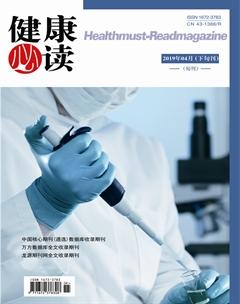環介導等溫擴增法快速檢測白血病患者AML-ETO表達的應用研究
朱洪靜 李揚 孫王男 姜國勝 周飛 姜紅
【摘 要】目的:在建立環介導等溫擴增LAMP法檢測M2型急性髓系白血病AML1-ETO融合基因,為臨床提供檢測微小殘留病(MRD)方法。方法:設計多組引物,篩選并建立LAMP法。同時,將外引物F3、B3作為PCR引物用于PCR方法,比較分析LAMP方法的特異性和敏感性。進行M2型白血病病例微小殘留病的檢測和驗證。結果:與傳統PCR檢測方法比較,LAMP法檢測AML1-ETO融合基因可以在特殊的等溫環境中短期實現,敏感度達到0.002 ng/μl,高于傳統PCR方法。具有快速判斷結果的特點。具有較高的臨床吻合性、特異性和敏感性。結論:LAMP可以成為傳統RT-PCR和熒光定量PCR的替代方法。
【關鍵詞】白血病;微小殘留病;環介導等溫擴增方法;融合基因
Abstract Objective: To establish a loop-mediated isothermal amplification of LAMP for detection of AML1-ETO fusion gene and to perform rapid detection of minimal residual disease in AML M2 patients.Methods: Log into the NCBI online software to design multiple sets of LAMP primers and design the PCR primers required for the validation phase. According to the reaction time and specificity, the reaction progress and results of different LAMP primer sets were detected and screened. According to the same nucleic acid sequence, PCR primers were designed to detect the gene expression, and the naked eye was observed for the positivity of the amplification results according to the color change of the reaction solution. At the same time, the external primers F3 and B3 were used as PCR primers for the comparison of the LAMP method and the PCR method to analyze the specificity and sensitivity of the LAMP method. Some clinical cases were selected for the corresponding inspection and analysis of minimal residual disease.RESULTS: The temperature of the AML1-ETO fusion gene was not changed by the LAMP assay. The whole process of the denaturation step could be completed in a short time under isothermal conditions. The amplified product could be detected or the amplification reaction could be judged. The LAMP method does not require special reagents, and the amplification does not require changing the reaction temperature to quickly determine the characteristics of the results. It has a high agreement with the traditional PCR detection method.Conclusion: The detection of AML1-ETO fusion gene by LAMP method has high specificity and sensitivity. It is an alternative method to traditional RT-PCR and fluorescence quantitative PCR.
Key words: leukemia; minimal residual disease; loop-mediated isothermal amplification; AML1-ETO fusion gene.
【中圖分類號】 R387.22
【文獻標識碼】 A【文章編號】 1672-3783(2019)04-03-077-01
前言
多數研究結果表明,這種白血病復發的原因和微小殘留病(minimal? residual disease MRD)有關[1-3]。臨床常用的AML的MRD檢測技術主要包括染色體分析、FISH技術、聚合酶鏈式反應、數字化PCR\\多參數流式細胞術和二代測序等,但是多數步驟繁瑣,并各自存在不同的缺點。如RT-PCR或者RQ-PCR等PCR方法,檢測步驟多,需要時間長,實驗條件要求高。因此,需要發掘新的快速、準確、敏感和穩定的檢測方法。LAMP法是“環介導等溫擴增技術(Loop-mediated Isothermal Amplification, LAMP),是一種“簡便、快速、準確”的基因擴增方法。本研究采用LAMP法檢測AML1-ETO融合基因,具有較高的特異性、敏感性。
1 材料與方法
1.1 主要材料:RPMI Medium 1640購自Hyclone公司,血清購自美國Gibco公司。細胞株來源:K562細胞、NB4細胞、kasumi-1細胞、HL-60細胞購自中國科學院上海細胞庫。引物:由博尚公司合成。
1.2 RT-PCR檢測細胞中目的基因的表達:首先將外引物F3、B3作為PCR引物,采用實驗室常規PCR方法檢測細胞中AML1/ETO基因的表達。
1.3 LAMP引物設計與篩選:登錄NCBI查閱目的基因的保守基因序列,設計多組LAMP引物,并設計驗證階段所需的PCR引物。優化擴增條件,LAMP檢測方法。檢測特異性、敏感性和穩定性。
1.4 臨床樣本檢測:用建立的LAMP檢測方法檢測15份臨床樣本,與PCR法進行對比,比較陽性率、臨床符合率、操作時間、操作便捷度,進一步驗證本方法的先進性和臨床可應用性。
2 結果
2.1 LAMP方法的建立及引物篩選:擴增條件為60-65℃恒溫反應1 h;LA-320C實時濁度儀中擴增條件為:63℃恒溫反應1 h。反應結束后,取出離心管,裸眼觀察結果。若管中液體變為綠色,則為陽性,若為橙色則為陰性(如圖1)。
2.2 敏感性:LAMP檢測:0.002-2000 ng/μl的樣本RNA,0.002-2000 ng/μl的樣本均為陽性,反應結束后均變為綠色,0.0002 ng/μl的樣本為陰性。表明LAMP方法對AML1/ETO基因的檢測下限為0.002 ng/μl。以F3、B3為引物,對以上樣本進行PCR擴增。結果顯示樣本PCR方法對AML1/ETO基因的檢測下限為0.02 ng/μl 。說明LAMP方法比PCR方法的靈敏度高10倍。
2.3臨床樣本檢測:選擇正常人血液15例、RT-PCR陽性的AML-M2型患者血液15例,進行LAMP擴增。來自15例M2患者為陽性結果,正確率100%,表明本試劑盒特異性很好。
3 討論
隨著對白血病發病機制的深入研究及治療方案的改進,白血病的診治水平不斷提高,但仍有部分患者最終復發,甚至導致死亡[3]。復發的主要原因是存在微小殘留病(MRD)。本研究利用LAMP檢測白血病患者常見的AML1/ETO融合基因,擬建立白血病微小殘留病快速檢測方法。結果表明我們建立的LAMP檢測方法的敏感度達到0.002ng/μl,而傳統PCR方法的敏感性為0.02ng/μl。該檢測方法在臨床病例檢測中也得到了進一步驗證,是臨床急需發展的快速MRD檢測方法。
參考文獻
[1]Rai K.R., Holland J.F., Glidewell O.J., Weinberg V., Brunner K., Obrecht J.P., Preisler H.D., Nawabi I.W., Prager D., Carey R.W., et al. Treatment of acute myelocytic leukemia: A study by cancer and leukemia group B. Blood. 1981;58:1203–1212.
[2]Fernandez H.F., Sun Z., Yao X., Litzow M.R., Luger S.M., Paietta E.M., Racevskis J., Dewald G.W., Ketterling R.P., Bennett J.M., et al. Anthracycline dose intensification in acute myeloid leukemia. N. Engl. J. Med. 2009;361:1249–1259.
[3]Estey E.H. Acute myeloid leukemia: 2014 Update on risk-stratification and management. Am. J. Hematol. 2014;89:1063–1081.

